Warm and Lightweight 3-Season Sleeping Bag
When it comes time to bed down for the night, getting a good kip is of upmost importance irrespective whether on a leisurely overnight hike or a multi-day trek. Key to this of course is a warm, comfortable, and lightweight sleeping bag. Since 2013, I have been using a Nanga Swellbag 760 Fill Power with 380 grams of duck down. It has served me incredibly well over the years with few complaints. Thus, when it came time to finding a replacement, my immediate thought was to gravitate towards another from this well-regarded Japanese sleeping bag manufacturer. Outside of Japan, Nanga is relatively unknown which is a shame as their high-quality craftsmanship is on par with the likes of Western Mountaineering and Feathered Friends.
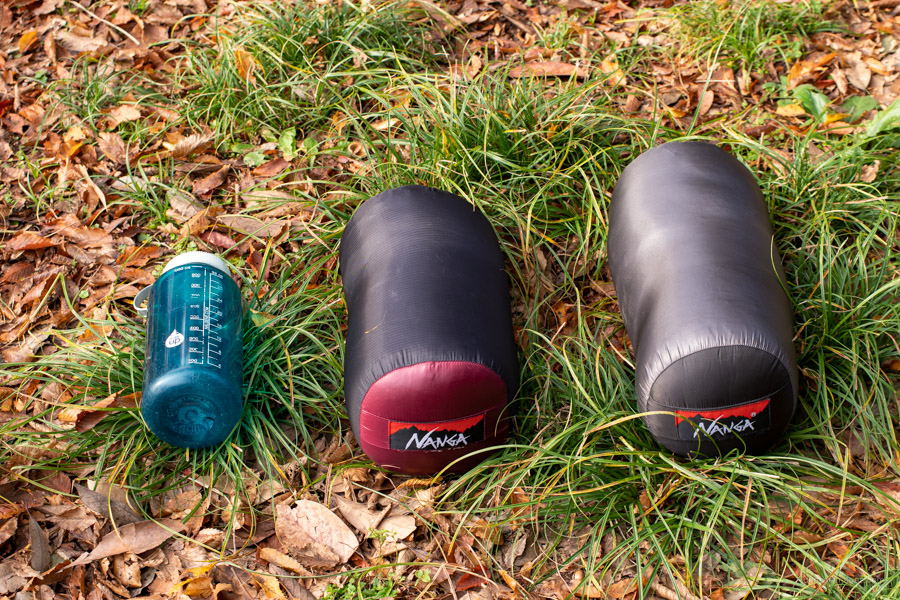
Nanga Swellbag 380 DX vs Aurora Light 450 DX.
As I mention in the Nanga Swellbag review, of the three big Japanese sleeping bag brands Nanga is the only one that produces their sleeping bags locally in Maibara City, Shiga Prefecture. Montbell makes theirs in Vietnam while Isuka sources some of their materials in Japan while most of the fabrication is done in China. This is not to say there are quality issues when it comes to Montbell and Isuka bags, it’s just that I prefer to put my money towards supporting local outdoor industry jobs. All three manufacturers follow the European Standard EN13537 – a standard for determining temperature ratings for sleeping bags.
First Impressions
Unfurling the Aurora Light 450 DX my first impression is that it exudes style. The two-tone black and dark navy (added fall 2021) looks amazing. It’s a personal preference but I far prefer Nanga’s darker hues then ‘Big Bird’ yellow offered by Montbell and Izuka in their equivalent models. One small but noticeable change is, the shell fabric has switched from 20 denier to 15 denier and rather than a standard DWR finish now sports an Aurora-Tex waterproof coating with a 20,000 mm hydrostatic head. As a point of reference Feathered Friends bags use Pertex Endurance (10,000 mm hydrostatic head). This waterproofness adds an extra 40 grams of weight compared to models that don’t such as the UDD Bag 450DX.
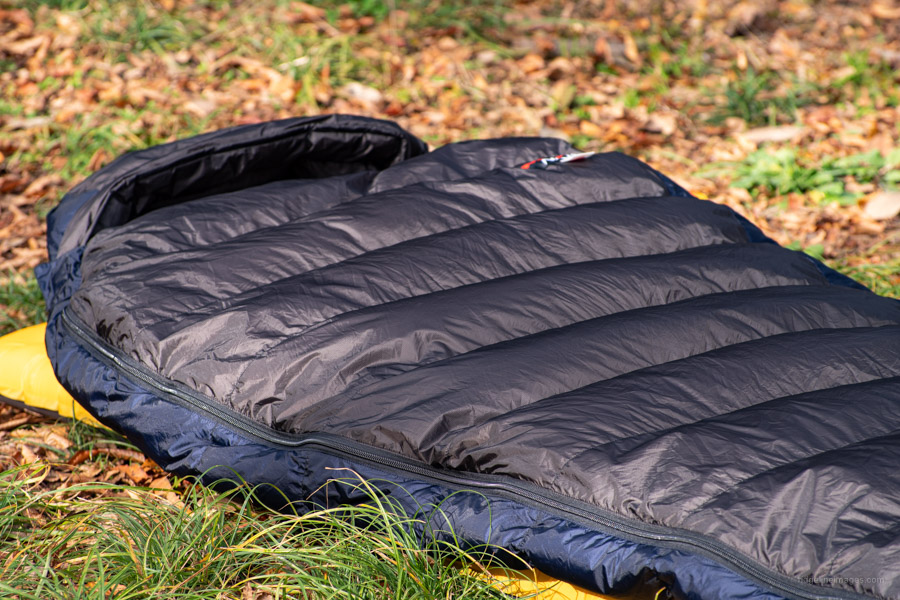
Nanga Aurora Light 450 DX sleeping bag.
The Aurora Light uses ethically sourced Spanish white duck down, washed in Japan and divided into ten horizontal baffles. The footbox is filled with a higher ratio of down to keep your feet warm. Made primarily for the Japanese market the regular bag is for sleepers up to 178 cm in height. Believe it or not this is a step-up on the Nanga Swellbag that tapped out at 175 cm! Even for a shortish person like myself (171 cm) it was only just long enough so this extra leg room is very much welcomed. The Aurora Light 450 DX also comes in a long (185 cm) as well as a short (165 cm) version. Other features include a shoulder warmer to prevent warm air escaping, a draft tube around the neck to block cold air from entering and a drawing string to cinch down the hood. A nice final touch is a phosphorescent tag on the snag free YKK zipper slider and a Velcro closure to stop it from being unintentionally undone while sleeping.
While the dimensions are identical to the Nanga Swellbag the Aurora Light 450 DX feels roomier with a snug hood. It very packable, compressing to a respectable 14×30 cm. The stuff sack Nanga includes with the Aurora Light is a feathery 19 g. A nice bonus is the included drawstring mesh bag making it perfect for long-term storage. Lastly, a strong point of any Nanga bag is the is the lifetime warranty. They can be repaired free of charge throughout the lifetime of the product. As far as I’m aware they are still the only sleeping manufacturer that for a fee will ‘top-up’ the down.
Performance in the Field
So far, I have used the Aurora Light 450 DX around half a dozen times this autumn with overnight lows ranging from around 8 to -2 degrees (snowy conditions). On colder nights I slept in a Montbell Warm Up Sheet with a lightweight Polartec fleece and thermal pants and remained comfortably warm. Layered with additional clothing I feel the Aurora Light would be fine to its Lower Limit EN temperature rating of -5 degrees. What I probably love most is waking up on high condensation mornings to the find the footbox completely dry thanks to the Aurora-Tex coating. Seems like a minor point but stuffing away a semi damp bag, yearning for some warm rays at the next campsite to dry it out isn’t ideal. While it’s a minor issue, re-stuffing the Aurora Light is more of a chore than it was with the Nanga Swellbag.
How it Compares
| Brand | Model | Insulation | Lower limit | Weight | Max. user length | Price | Origin |
|---|---|---|---|---|---|---|---|
| Nanga | Aurora Light 450 DX | 760FP | -5ºC | 865 g | 178 cm | ¥42900 | Japan |
| Nanga | Aurora Light 450 SPDX | 860FP | -13ºC | 865 g | 178 cm | ¥88000 | Japan |
| Nanga | UDD Bag 450 DX | 770FP | -4ºC | 825 g | 178 cm | ¥43450 | Japan |
| Nanga | Aurora 500 | 650FP | -4ºC | 1185 g | 178 cm | ¥38500 | Japan |
| Montbell | Seamless Down Hugger 800 #2 | 800FP | -5ºC | 677 g | 183 cm | ¥41800 | Vietnam |
| Montbell | Seamless Down Hugger WR 900 #2 | 900FP | -5ºC | 702 g | 183 cm | ¥59400 | Vietnam |
| Isuka | Air Drought 480 | 750FP | -6ºC | 870 g | *180 cm | ¥40700 | China |
| Isuka | Air Plus 450 | 800FP | -6ºC | 840 g | *180 cm | ¥47300 | China |
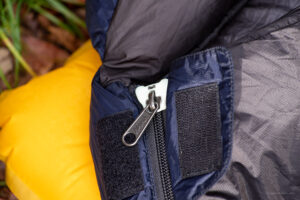
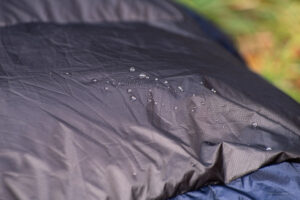
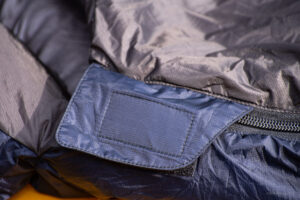
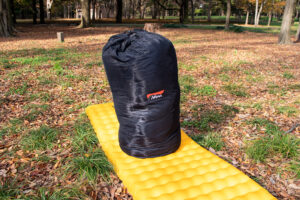
Final Thoughts
As a 3-season bag the Aurora Light 450 DX ticks most boxes. It will keep you warm down to at least its -5ºC temperature rating and also dry thanks to its breathable Aurora-Tex waterproof coating. Its compressed volume of 5.2 L means it takes up minimal room in your pack. A slight weakness of the Aurora Light however is the 760 Fill Power. I believe the bag would be a more attractive purchase with an 800FP even if with a price premium. Which brings me to another detail, the insane price of the Aurora Light 450 SPDX. I could understand if the bag was 20,000 yen more expensive but over double price for 860FP is nuts. With a street price of under 40,000 yen makes the Aurora Light 450 DX one of the best sleeping bags in its class and a compelling choice.
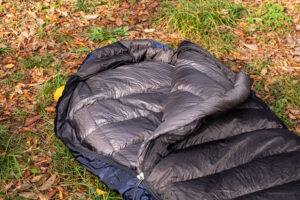
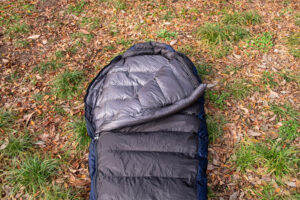
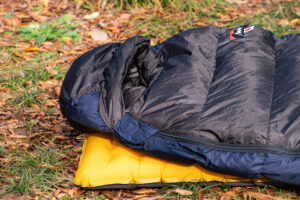
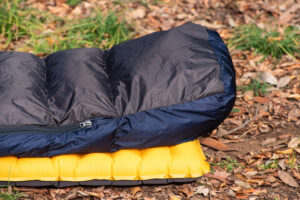
.
BOTTOM LINE
A well-priced, premium bag that combines warmth, low weight, and excellent packability backed by Nanga’s lifetime warranty.
Nanga Aurora Light 450 DX Sleeping Bag: Specs
Comfort temperature: 0ºC
Limit temperature: -5ºC
Weight: 865 g (1.91 lbs)
Packed size: φ14×30 cm
Length: 210 cm
Shoulder width: 80 cm
Max. user height: 178 cm
Shell fabric: 15dn Aurora-Tex waterproof coating
Lining: 15dn taffeta ripstop nylon
Fill power: 90/10 760 Spanish duck down
Fill weight: 450 g
Zip side: right
Zipper: YKK 5C
Colour: black/dark navy
Country of origin: Japan
Aurora Light 450 DX: 42,900 yen (Including tax) (as at Nov 26, 2021)
*AVAILABLE AT: AMAZON JAPAN
.
* When you use our affiliate links to make your purchase, the seller will contribute a portion of the sale to help support this site.
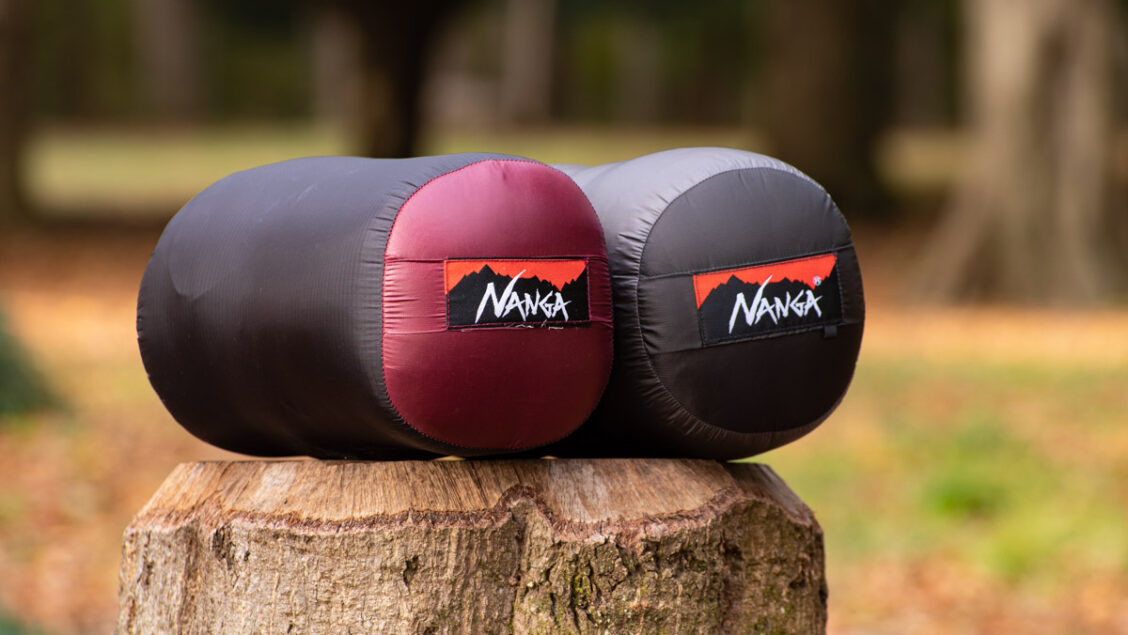
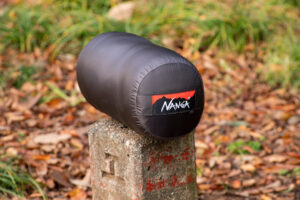
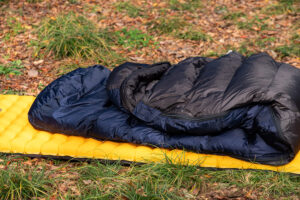
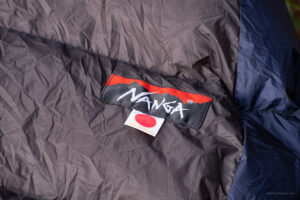
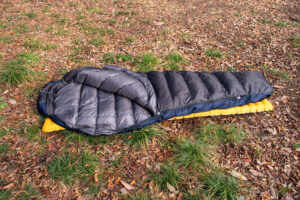
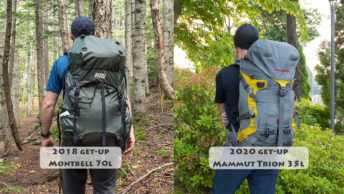
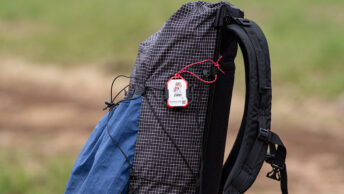
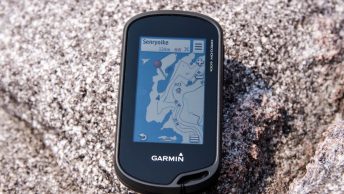
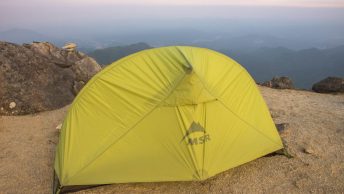
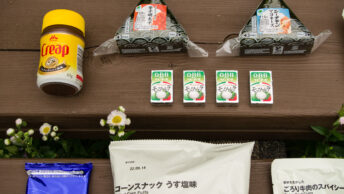
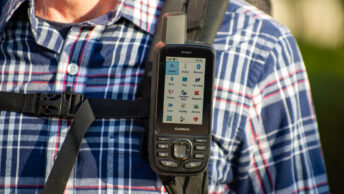
Are you trying to give my wife ideas for my Christmas present?
Ha! Hide the price for now and just emphasize that it’s made in Japan and buying one helps support local jobs 🙂
Nanga makes very nice sleeping bags. Upgraded recently to the 450SPDX. I am a cold sleeper and generally used to have the “comfort + 5 degrees” rule as well as “you don’t want to test the ‘limit’ rating”. Wanted to try and maybe extend the overnight hiking season into later November but also remembered encountering near-zero (or even sub-zero I think) temps in late October, so keeping those in mind went for the SPDX version. It was a tough decision given the, as you correctly noticed, absolutely insane price tag of it.
In hindsight, planning a distant hike worthy of an overnight stay is extremely difficult in end-season times with public transportation shutting down on those routes and daylight time shrinking drastically. So it may have been a massive overkill and a 450DX + a liner would have probably been more than enough but oh well.
From the camping I’ve done with it, it has been extremely warm and cozy + the size/weight reduction compared to my previous nothing-special montbell bag is very welcome.
Biggest pain point is putting the damn thing back into the compression sack. Never thought it could be so difficult.
If you ever feel like testing out the difference between DX and SPDX, I’d be happy to lend mine for a review 😀
Too right Nanga makes some top-notch bags. I would have loved to have shelled out for the SPDX model but couldn’t quite pull the trigger at that price point. Like yourself I’m a cold sleeper so the sacrifice becomes sleeping with some extra layers and ‘suffering’ somewhat at the lower limit. The coldest night thus far was a cold bleak one at Odarumitoge at the end of October – I plan to post about this hike sometime soon. The next morning my water bottle was half frozen and the temperature inside the tent was -2 degrees. With my Montbell inner sheet and fleece I actually slept fine. In my old Nanga Swellbag at those kinds of temperatures, let’s just say it wasn’t a lot of fun. Alex, I appreciate your kind offer of lending me your SPDX for a review and comparison. If I do decide to do that I’ll be in touch. It’s getting late in the season but if you do another overnighter the SPDX will surely keep you warm.
Thanks for the breakdown. Very informative, particularly the comparison (FYI this table doesn’t appear in emails for some reason). Out of curiosity, why the upgrade from the Nanga 380 DX to the 450 DX?
No worries, Ian. The main reasons I decided to upgrade were to capitalise on the extra down, I know it’s only 70 grams, but it does make a difference. Also, the footbox of the Nanga 380 DX often became damp due to condensation on cold mornings. As for the table not appearing the email, I’m not 100 percent certain but I think it has something to do with Jetpack’s inability to display the table’s plugin shortcode.
I came into a small inheritance recently, and decided to order a new sleeping bag. If anyone has friends/ family in the UK/continental Europe (to save on shipping/taxes), Cumulus Gear is perhaps worth a look. It’s a small cottage company based in Poland. They’ve been around for over 30 years. Poland produces 20% of the world’s goose down. (It’s considered the best in the world. Japan imports tons of it for high quality duvets and pillows). Cumulus also uses extensively Japanese Pertex. Excellent customer service (lengthy next day email responses to me)
I’m an ultralighter, and this bag competes for weight with top-notch quilts,, like those from Enlightened Equipment. For those interested, this is what I went with:
Custom XLite 300, w/ extra fill (total: 350g 900FP)
Limit : 20F / – 7 celsius
two thirds length zipper (can open almost like a quilt), 5mm (3mm can snag)
Outer: black (fast drying) / inner: dark blue : dark for faster drying
(Some people choose orange / yellow/ red for search and rescue purposes)
Cost : 324 euros (51,000 yen) “buy once, cry once” — ouch !
Weight : 535 g
Buying from the source of the goose down makes sense. Just had a look at their website. They have an incredible number of customisations. Usually, it’s something like choose your zipper side, they have that along with eight choices of zipper type/length! Upping the down amount seems like a wise decision. Hope it works well for you.
If you ever go to the dark side (full ultralight), Cumulus is the gold standard in Europe for down sleeping bags. For synthetic (Climashield Apex), it’s AS Tucas in Spain; been going 10 years. Unless you have a Euro connection, Cumulus probably isn’t worth it (tax hit), but you sometimes see Cumulus stuff on Mercari.jp, inc. the XLite series. If I had USA connections, I’d look at Katabatic; probably even better than Cumulus, not for the down, but for the design innovations. USA is way ahead on the bag/quilt front, I think
David — I’m a cold sleeper, too. These are some ideas to consider: down/synthetic booties, warmer & lighter than wool socks. I got Aegismax 650FP down booties from Aliexpress. Free shipping, 2000 yen. Sourcing of down is questionable (your call). Fleece : Alpha Direct or Alpha Polartec crew or hoody (you can read up on its US military special forces origin). This garment is a game changer for me: sleep, active 3 season use, around town etc. At least twice as warm as normal fleece, tons lighter,very breathable, will snag (no bushwhacking). My crew is 90gsm body, 60gsm sleeves, in a large 110 grams ! Plenty of discussion on Reddit Ultralight on the topic. Not really available much in Japan; Yamatomichi use it for a few items, but super pricey.
Mail Joe at : https://www.farpointeog.com/
Senchi Designs also do them, but sizing is an issue, I read
https://www.senchidesigns.com/